Mapping Methodism – Lelant (Uny) (Trendreath) Wesleyan Chapel
Categories Mapping Methodism, Projects0 Comments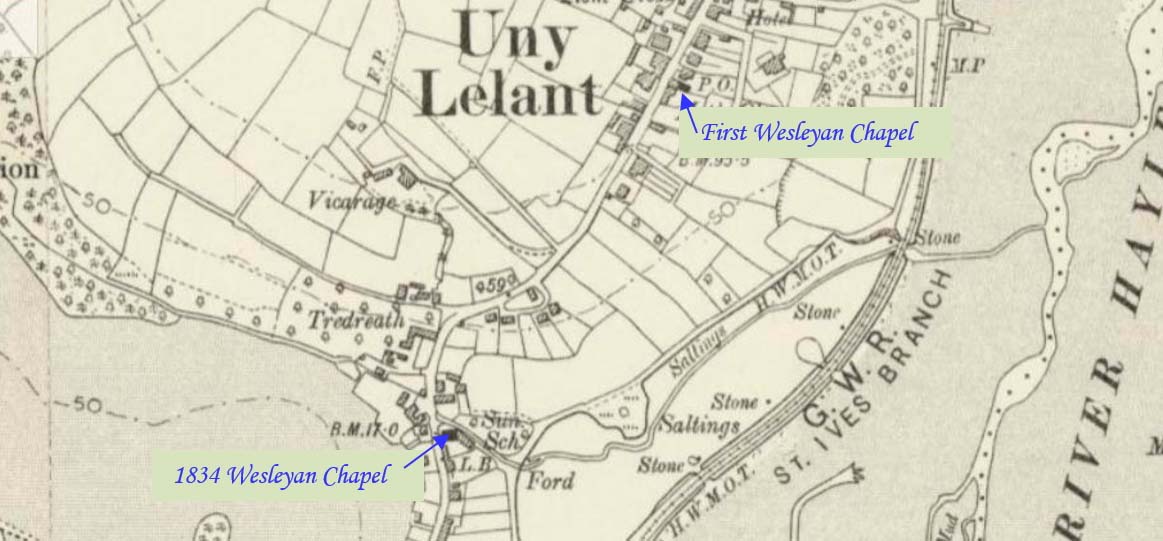
Lelant is on the west side of the Hayle Estuary about 2+1⁄2 miles (4.0 km) southeast of St Ives and one mile (1.6 km) west of Hayle. This profile of Lelant Wesleyan Chapel has been compiled by Jo Lewis and Tony Mansell.
The earliest written reference to a possible Methodist ‘chapel’ in Lelant is in 1766. John Wesley records in his Journal that on 10 September “the rain drove us into the house.” This might have been a meeting house, or a Lelant Methodist’s home used for worship. The earliest record of a Methodist religious society, an organised group of worshippers, at Lelant is 1767. There is a deed of 17 May 1791 for a “Lelant Preaching House” [Appleby 1984]. This is about an expired lease on land on which, the deed says, had been “lately created…a Methodist Preaching House.” The house was built on land known as “Peters.” This is likely to have been the site of the Chapel (The 1820/38 map of the village marks this site).
First Chapel
A Primitive Methodist chapel in Fore Street is recorded on the 1st and 2nd Edition 1:2500 1880 and 1907 OS Maps. Still extant and used as a village hall and listed grade II. Coursed granite with Pedimental end gable front with central round-headed doorway with fanlight. Doorway flanked by tall round-headed sash windows with glazing bars. Tall sash windows at sides. Slate roof. Listed in Stell (b1).
Became a Primitive Methodist Chapel.
Became a village hall.
1834 Chapel
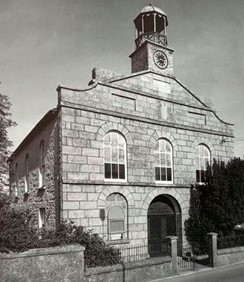 Lelant Wesleyan Chapel
Lelant Wesleyan Chapel
Wesleyan chapel and attached later Sunday school, now all disused and vacant. Granite ashlar front end, otherwise painted rubble. Classical style with 2-tier pediment and sill string course. Symmetrical 2-storey 3-window front with round-arched openings, the pediment surmounted by a slate-hung bellcote with clock. Old, fixed lights with glazing bars over blind windows to front; original sashes to sides including round-arched sashes with fanlight heads to first floor. Late C19 panelled doors with diagonal boarding. Low granite coped forecourt wall with iron railings and gates. Originally galleried but interior not inspected. One of the best and least altered exteriors of the medium-sized Methodist chapels in Cornwall. The modern Mastermap (2006) records ‘The Old Chapel’, suggesting that the chapel has been converted for domestic use. Listed and illustrated in Stell (b1). (Cornwall Heritage Gateway)
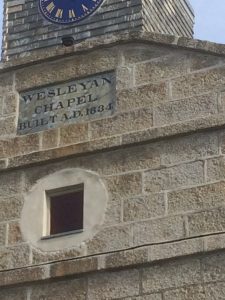 (Photo: Val Thomas)
(Photo: Val Thomas)
1834: Build date. (Cornwall Heritage Gateway / Plaque)
1834: Following a Methodist revival, the Wesleyans built a new chapel at Trendreath at the southern end of the village.
1851: The religious census reported a morning attendance of fifty-three, plus sixty-three Sunday scholars; and an evening attendance of two hundred. There were no afternoon services.
1851: William Burgess was the minister. (Lelant)
1873: Seating for 382. (Lelant)
1893: TENDERS are invited for the ERECTION a SUNDAY-SCHOOL and for the Re-seating and Renovation of the Wesleyan Chapel Lelant, for the Trustees of that Society. Plans and specifications may be seen on application to the undersigned and after Thursday, July IS. Sealed and endorsed Tenders to be sent Mr. Ed. Mitchell, Lelant, on or before SATURDAY, July 29 next. The Trustees do not bind themselves to accept the lowest or any Tender. (The Cornish Telegraph – Thursday 20 July 1893)
1893: New Sunday school extension was begun; it was opened in March the next year.
1907: “Sunday School Festival. Lelant Wesleyan Sunday school held its annual festival on Saturday. Led by the local brass band, the teachers and scholars paraded the village, afterwards going to a field, where there was tea and various forms of amusement …” (27 June 1907 – West Briton and Cornwall Advertiser)
1923: The harmonium was replaced with a pipe organ which cost £450.
1923: Electricity installed.
1932: The Wesleyan, Primitive Methodist and the United Methodist Church amalgamated to become the Methodist Church of Great Britain.
1934: Electric heating installed.
There were intermittent revivals. For example, John Hosking, a Methodist minister from Montana, who originally came from Lelant, ran a mission in the chapel at the beginning of the twentieth century [Cornish Telegraph 20 January 1904].
1940: Seating for 340. (David Easton, Methodist minister and historian)
24th November 1987: Planning consent for conversion to a house.
1985: Closed. (Lelant)
1987: Closed. (David Easton, Methodist minister and historian)
19 February 1988: Sold by auction on at the Badger Inn, Lelant.
1983-1988: Papers, insurance and sale, Lelant Methodist Church, Lelant. (Kresen Kernow MRIHY/335)
1985-1988: Papers, closure and sale, Lelant Methodist Church. (Kresen Kernow MRIHY/529)
Bought by Studio Operations Southwest for a film studio and residential film school
Used as a studio/workshop.
 (Photo: Jo Lewis)
(Photo: Jo Lewis)
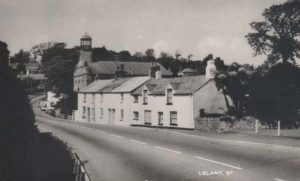 (Photo: courtesy Val Thomas)
(Photo: courtesy Val Thomas)
2020: Planning permission for conversion into flats.
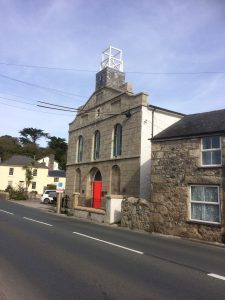 (Photo: courtesy Val Thomas)
(Photo: courtesy Val Thomas)
 (Photo: courtesy Val Thomas)
(Photo: courtesy Val Thomas)
